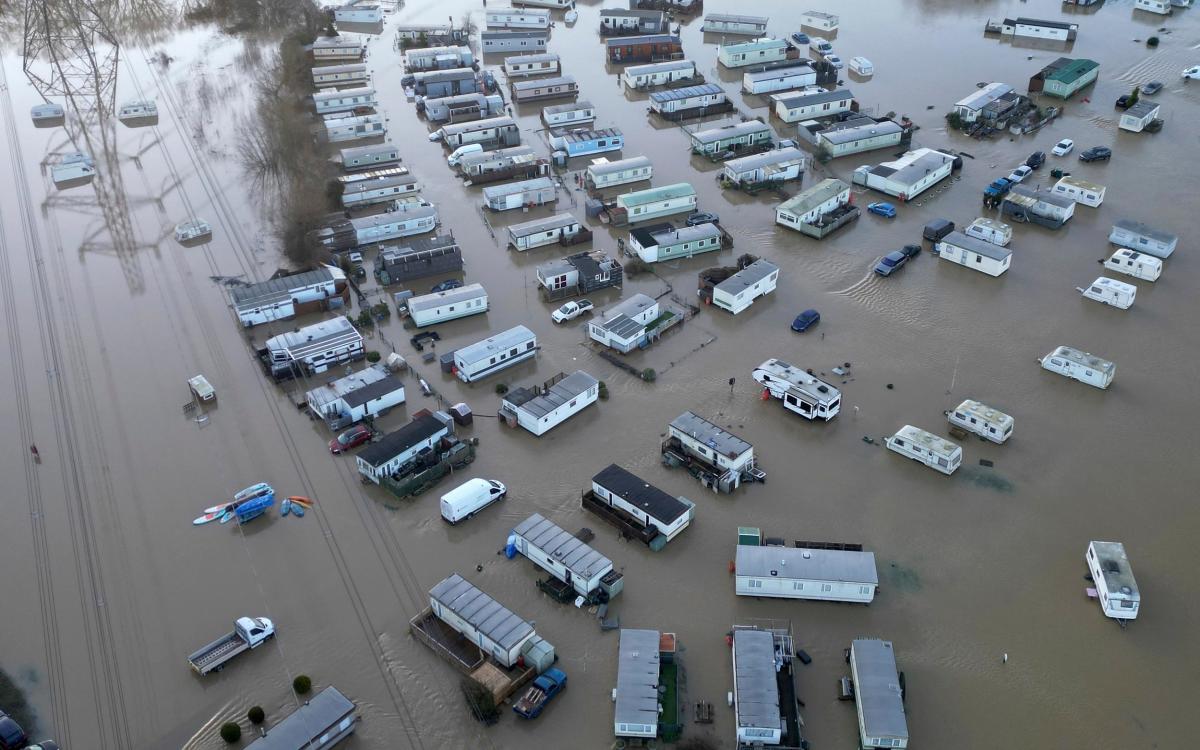As Cold Snap Eases, Flood Warnings Persist: Understanding the Risks
As the biting cold snap that gripped many regions begins to ease, the focus shifts to a new set of challenges. With temperatures rising, the threat of flooding looms large as melting snow and ice move toward waterways, prompting officials to issue flood warnings across various areas. It’s essential for residents to stay informed and prepared as weather conditions can change rapidly. In this article, we’ll explore the implications of this transition and what you need to know to navigate the potential hazards safely.
Why Flood Warnings Are Issued After a Cold Snap
When a cold snap occurs, it often results in significant snowfall or ice accumulation. As temperatures begin to rise, this frozen precipitation starts to melt. The rapid thaw can lead to several complications:
- Increased Water Levels: Melting snow and ice flow into rivers, lakes, and streams, raising water levels significantly.
- Rapid Runoff: If the ground is still frozen, it can’t absorb the melting water, leading to quicker runoff into waterways.
- Ice Jam Formation: As ice melts, it can create blockages in rivers, causing water to back up and flood surrounding areas.
These factors are why meteorologists and local governments monitor conditions closely and issue flood warnings as a precautionary measure.
What to Expect: Current Weather Patterns
The transition from extreme cold to warmer temperatures is a complex process influenced by various meteorological factors. According to the National Weather Service, regions that have recently experienced significant snowfall should prepare for the following:
- Temperature Fluctuations: Expect daytime highs significantly above freezing, which can accelerate snowmelt.
- Precipitation: Rain may accompany warmer temperatures, further increasing the risk of flooding.
- Wind Conditions: Strong winds can exacerbate the flooding risk by causing ice to break up more rapidly, leading to ice jams.
Understanding Flood Warnings and Alerts
It’s crucial to understand the different levels of flood alerts that may be issued:
- Flood Watch: Conditions are favorable for flooding, and residents should be alert.
- Flood Warning: Flooding is imminent or already occurring. Residents in affected areas should take immediate action.
- Flash Flood Warning: Rapid flooding is expected, often within six hours. This is typically more severe and requires urgent attention.
Stay informed through local news outlets, weather apps, and social media channels for real-time updates on flood warnings in your area.
How to Prepare for Potential Flooding
Preparation is key when facing the possibility of flooding. Here are essential steps to ensure you and your family are ready:
- Create an Emergency Kit: Include essentials like water, non-perishable food, medications, flashlights, batteries, and important documents.
- Know Your Evacuation Routes: Familiarize yourself with local evacuation routes and stay informed about any changes to them.
- Protect Your Property: Move valuable items to higher ground and consider sandbags or other barriers if flooding is likely.
- Stay Informed: Monitor weather updates and heed any warnings from local authorities.
- Plan for Pets: Ensure you have a plan for your pets, including food, water, and a safe transportation method.
Community Response and Resources
Communities often come together during times of crisis. Local governments typically set up resources and support systems for those affected by flooding:
- Shelters: Check with local agencies for emergency shelters if evacuation is necessary.
- Emergency Services: Local fire and rescue departments may offer assistance and information during flooding events.
- Community Centers: Many community centers become hubs for information and support during severe weather events.
Engage with local social media groups to connect with neighbors and share information about the situation in your area.
Long-term Considerations: Climate Change and Flooding
As we navigate these immediate flood risks, it’s also worth considering the longer-term implications of climate change on weather patterns and flooding. Research indicates that climate change is causing more intense and frequent weather events, including heavy rainfall and rapid snowmelt. This not only increases the risk of flooding but also poses challenges for infrastructure, emergency response, and community resilience.
Local governments and communities are increasingly focusing on sustainable practices to mitigate flooding risks, such as:
- Improving Drainage Systems: Upgrading infrastructure to handle heavy rainfall can reduce flooding impacts.
- Green Spaces: Creating parks and green areas can help absorb excess rainwater.
- Public Education: Informing residents about flood risks and preparedness can enhance community resilience.
Conclusion: Stay Vigilant and Prepared
As the cold snap eases, the potential for flooding remains a significant concern. By understanding the risks, staying informed, and preparing adequately, you can protect yourself and your loved ones from the adverse effects of flooding. Remember, weather conditions can change quickly, so vigilance is key. Utilize available resources, heed warnings, and work together as a community to navigate these challenges effectively. With preparation and proactive measures, we can face these weather-related challenges head-on and ensure safety for all.
See more Your Daily Weather



